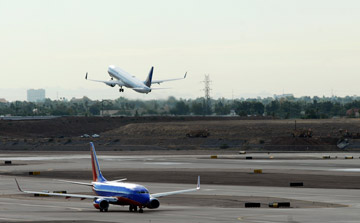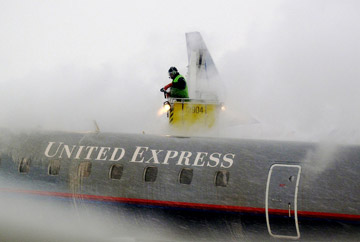“It is a major safety issue. Every single airplane lands and takes off. That means there’s a chance (of a runway accident) twice in one flight,” Rowlett said. “With the congestion that’s going on and as busy as pilots and controllers are, it’s something to be concerned about.”
In fact, the worst aviation accident in history happened on a runway. Two Boeing 747s collided on the ground in the Canary Islands in 1977. One plane was taking off while the other plane was crossing the runway. The death toll was 583.
That accident, plus a 1979 non-fatal collision at Memphis International Airport and two near collisions in New York and Chicago around the same time, prompted the NTSB to issue its first runway safety recommendation in 1979. The board asked the FAA to study the severity of the problem and to come up with fixes at high-priority airports.
Two years after the study was requested in 1979, the FAA had its report. However, it was another four years before the FAA actually sent the report to the NTSB.
The NTSB responded by noting the report was four years old and that in the meantime it had started its own study, which it expected to “provide more specific recommendations.”
That study, completed in 1986, spawned another round of suggestions that resulted in more delays.
For example, the NTSB asked for better signs and markings on runways that could help prevent accidents. It took the FAA five years to figure out what the signs should say. Meanwhile, two planes collided on runways in Detroit in 1990 and Los Angeles in 1991, killing a total of 42 people.
The NTSB’s Rowlett was an air traffic manager at Los Angeles International Airport during the 1991 accident.
“‘Slow’ is the best word that comes to mind,” she said when asked to describe the FAA’s history of acting on runway safety recommendations. “Some (delays) I can understand. Technical solutions take awhile. They have to do the funding.”
But even changes that don’t require much money can take years to implement. In 2000, the NTSB asked the FAA to put in place a new rule to prevent planes from colliding at runway intersections. The rule, which didn’t take effect until June of this year, requires pilots to get explicit permission from an air traffic controller before crossing each runway rather than one clearance to cross several runways.
“That doesn’t cost a dime,” Rowlett said. “And it took 10 years for them to implement … Now that I don’t understand.”
The FAA’s Brown said in an e-mail that “reducing the number and severity of runway incursions is one of the FAA’s top priorities.” She said the FAA has taken a number of steps to prevent runway accidents, such as placing lights on runways that signal whether they are being used and digital displays that tell air traffic towers where planes are on runways. The result has been fewer runway accidents in the last decade, she said.
The agency also has invested in infrastructure at 28 airports to make it safer when planes veer off the runway, which account for 97 percent of runway accidents, according to a 2007 Flight Safety Foundation study.
But the FAA has resisted the technology that most safety experts say would do the most to prevent runway collisions. At present, sensor systems detect when something is amiss on a runway – a person standing where he shouldn’t or a plane that has taken a wrong turn. The warning is relayed to air traffic controllers, who, in turn, transmit the message to pilots.
A pilot might have 10 to 15 seconds to avoid a collision, Rowlett said. “Those are crucial seconds” that could be saved if warnings were routed directly to the cockpit, she said.
The NTSB has recommended some kind of direct warning system since 2000. It remains on the board’s “Most Wanted” list of priority safety recommendations.
The FAA has told the NTSB that it is working on technologies to alert pilots of dangers and should have improvements in place at some airports next year – 11 years after the recommendation was issued.


 Resistance in the Cockpit
Resistance in the Cockpit
